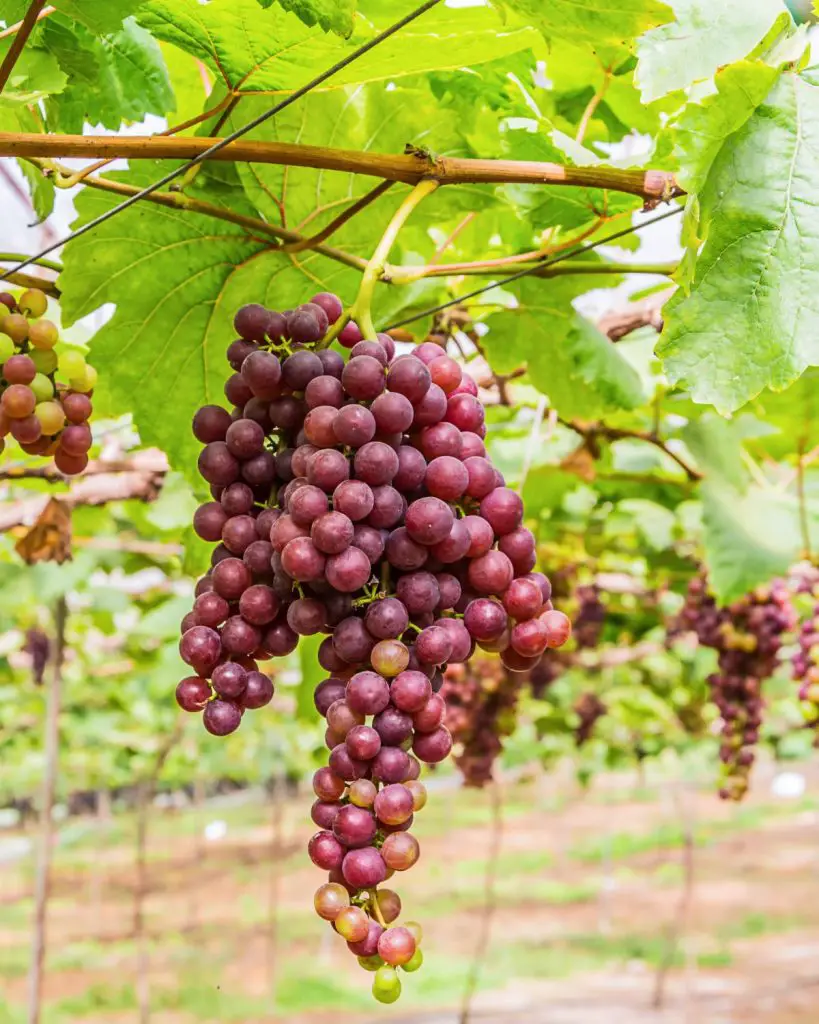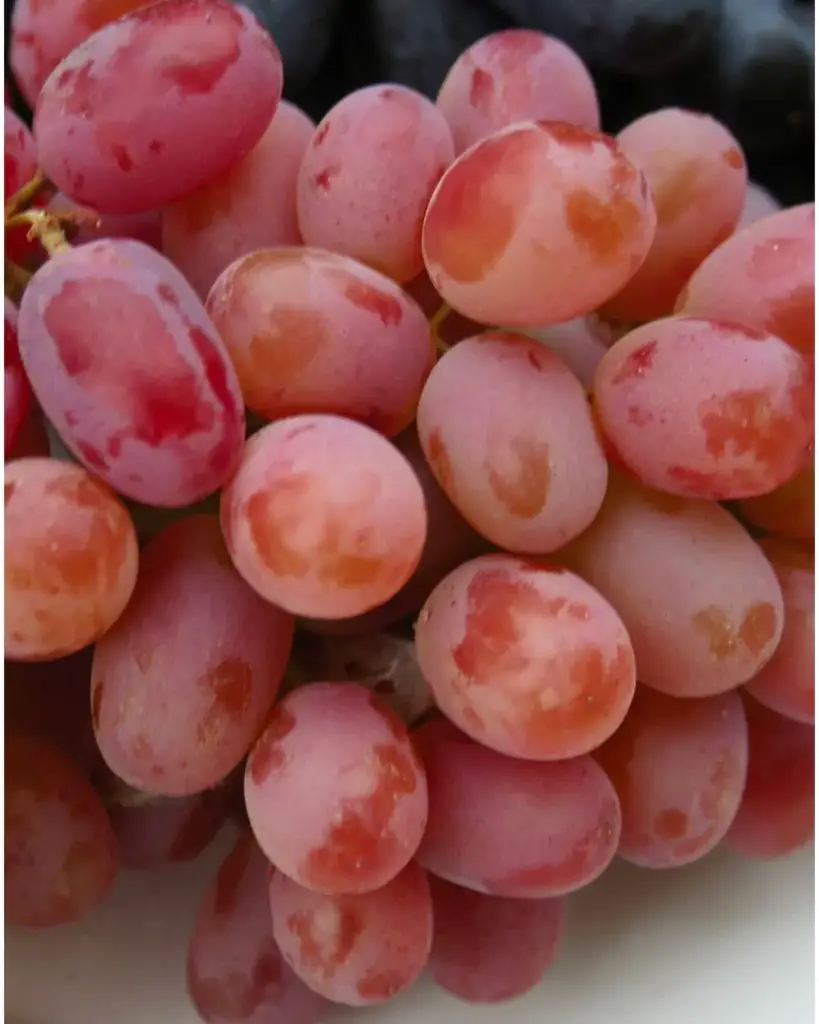How to Grow Grapes at Home – Step-by-Step Guide
Growing your own grapes at home can be an exciting way to enjoy a homegrown, deliciously sweet treat. Whether it’s for making wine or just savoring the flavor of fresh off-the-vine grapes, planting grapevines is achievable for anyone willing to put in the time and effort. But before you jump into starting your homestead vineyards, there are several steps involved in successfully growing these fruits. In this comprehensive guide, we’ll walk you through everything from selecting plants to harvesting delicious bunches of ripe grapes — all so you can easily cultivate succulent vino or table grapes without fail!
Disclosure: As an Amazon affiliate, I earn from qualifying purchases at no extra cost to you. My blog contains other affiliate links as well for your convenience. To learn more, you may read my Disclosure Policy. Thank you for supporting my blog!
Select a Suitable Site for Growing Grapes
For wine enthusiasts, growing your own grapes can be a rewarding endeavor. Not looking to make wine, growing grapes to provide food for your family is also rewarding. To begin, you’ll need to select a suitable site for your vineyard. Ideally, you want a location that provides good drainage, plenty of sunshine, and protection from strong winds.
Additionally, consider the soil type and pH levels, as grapes thrive in well-drained, slightly acidic soil. It’s also important to choose a site that is large enough to accommodate the number of vines you plan to grow, with sufficient spacing between them.

Prepare Soil for Planting Grapes
Preparing the soil for planting grapes is an essential step in maximizing grape yields and producing high-quality grapes. Whether planting in a vineyard or backyard garden, the soil should be analyzed for nutrients and physical properties to ensure it is suitable for grape growth.
A pH level of 6.0-7.5 is ideal for grapevines to absorb necessary nutrients, while soil that is rich in organic matter can retain moisture and promote root growth. Tilling the soil will also create a loose and aerated environment, which allows roots to penetrate more deeply and absorb essential minerals.
Choose the Best Grape Variety for your Climate
Grapes come in many delightful varieties, with the three main types being American, European and Muscadine. For added excitement you can even sample some of the hybrids made by crossing these two primary varieties!
American (Vitis labrusca) grapes are the most cold-hardy (zones 4-7) and thrive in short-season growing areas such as the Northeast. These are most often used for table grapes, juices, and jellies.
European (Vitis vinifera) grapes prefer a warm and dry Mediterranean-type climate (zones 7-10) with a longer growing season. Depending on the variety, these are used for winemaking and as table grapes.
Muscadine (Vitis rotundifolia) grapes are native to North America and grow well in the humid South (zones 7-9). These are most often used for winemaking as well as table grapes.
Our Favorite Varieties
How Many Grape Vines Should I Plant?
Mature table grapes can produce 15 to 30 pounds per vine. You may only want to plant a couple of vines.
Mature wine grapes produce about 12 pounds per vine, and it takes 40 pounds to make 12 bottles. If you’re serious about making wine, you’re going to need a lot of vines.
Plant the Grape Vines Properly
Planting grape vines may seem like a simple task, but doing it properly will ensure the strongest growth and the tastiest fruit. Start by selecting a sunny spot with well-draining soil and test the pH level. If necessary, add amendments to adjust the pH.
Before planting, soak the roots in water for a few hours. Then, dig a hole deep enough for the roots to be fully covered but not too deep that the graft union (the bump where the vine was attached to the rootstock) is buried.
Mix in compost or organic matter with the soil and gently pack it around the roots. Water thoroughly and add a stake for support.
Water and Fertilize Grapes for Optimal Growth
Grapes are a beloved fruit that can be grown in your very own backyard. However, growing grapes can be a finicky process that requires the right balance of water and fertilizer.
Water is key when it comes to grape production as they require a constant supply of moisture to grow properly.
Fertilizing grapevines doesn’t need to be too intensive! In the early spring, apply a light dosage of 10-10-10 or 10-20-20 fertilizer. Additionally, adding high quality compost around the vines is often enough for them to bear their delicious fruit year after year.

Prune and Train Grape Vines to Maximize Fruit Production
Grapes are a delicious and versatile fruit, but they don’t just grow on their own. A properly pruned and trained grape vine is essential for maximizing fruit production.
Pruning is an essential practice for grape-growing, as it helps to stimulate new growth. If done correctly, more plant should be cut away than left behind – a common mistake amongst novice vineyardists being not pruning hard enough. After all, grapes are borne on one year old vines and thus keeping the right schedule of trimming ensures their continued health and yield!
Grapes can be trained in a couple of different ways. This depends on your garden goals and the structure you plan on using for support.
- Vineyard style-The classic system of two wires strung between posts. This has the benefit of keeping your grapes where they are easy to harvest. It only requires a narrow space, such as along a fence or wall. This method has one central trunk and a one-year-old cane with about 8 buds going out horizontally on each wire. If you want to see how the professionals prune their grapevines, you can find more information here.
- Onto a trellis or pergola- A great way to incorporate edible plants in a decorative manner. Grapes can be trained onto arches or used to provide seasonal shade on a pergola. How lovely would it be to reach up and grab a snack while relaxing on your patio?! You can find detailed instructions on training and pruning grapes on a pergola here.
If you’re looking for a way to grow grapes without becoming an expert pruner, here’s the trick. Prune your vines in late winter or early spring and be sure to only leave two things: one main trunk (or trunks) and growth that is a year old – but don’t keep too much of it! Thin out unnecessary older wood, shorten what remains of the younger stuff, then make sure each cane has 2-8 buds on them. Now watch as those little caterpillars turn into delicious bunches of fruit!

Summer is the ideal time to give your vines a trim and keep them looking lush. Pruning can help ensure that they don’t get too unruly, plus it allows for improved sunlight exposure so that fruit ripens faster and with fewer outbreaks of powdery mildew due to increased air circulation. If you notice some bunches are growing in shady spots, thinning out these areas may be just what’s needed!
Protect Your Grape Plants from Disease and Pests
As a grape grower, you know that diligent care is necessary in order to produce a healthy crop year after year. There are a few common enemies to grape plants, including disease and pests.
However, with the right tools and techniques, it’s not impossible to keep them at bay. One important step is to maintain proper hygiene in your vineyard – removing any plant debris or dead leaves can help prevent the spread of disease.
Additionally, certain insecticides and fungicides can help to minimize the damage that pests and diseases can cause. By taking the necessary precautions and staying vigilant, you can ensure that your grape plants remain healthy and thriving.
Growing grapes is a rewarding experience that requires patience and perseverance. The success of your grapevines starts with choosing the right site, preparing the soil, and planting properly. Then, by adequately supplying water and fertilizing, you can ensure that your grapevines have the necessary nutrients for healthy growth. Pruning and training will optimize fruit production and protect against many diseases and pests. With a little commitment and some practical knowledge, you can successfully grow great grapes!
You may also enjoy these related articles:
- Planting a Permaculture Orchard
- How to Grow Hardy Kiwi in Your Backyard Orchard
- Planting Fruit Trees in Containers
- The Best Companion Planting for Apple Trees
Did you enjoy this article? Want to hear more? Stay in touch! Sign up below to receive weekly tips and inspiration for your homestead.



